

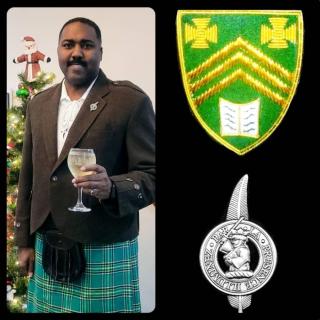
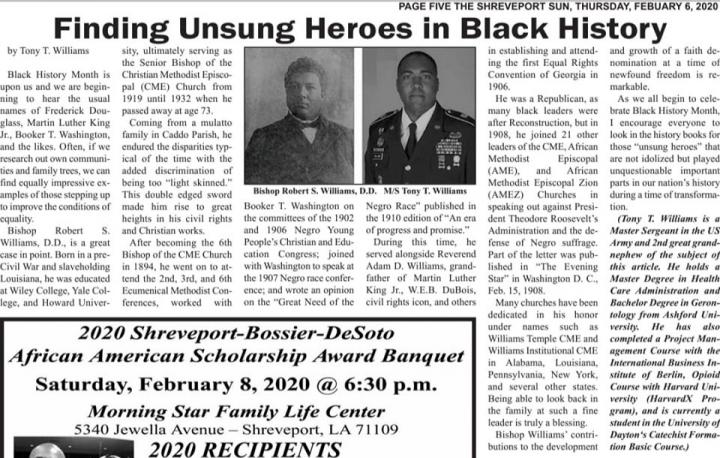
My 2nd great granduncle, Dr. Robert S. Williams, D.D., was the 6th Bishop of the CME Chruch, elected in 1894. His brother, Elder Charles H. Williams was also active in the denomination and presided in Louisiana and Texas. Robert was a founding member of Miles College, President of the College, and on the Board of Trustees of Paine College. He presided over the 3rd and 5th Episcopal Districts and served as the Senior Bishop of the CME Chruch 1919-1932.
The Christian Methodist Episcopal Church, familiarly known as the CME Church, was organized December 16, 1870 in Jackson, Tennessee by 41 former slave members of the Methodist Episcopal Church, South. Composed primarily of African Americans, the CME Church is a branch of Wesleyan Methodism founded and organized by John Wesley in England in 1844 and established in America as the Methodist Episcopal Church in 1784. As such it is a church of Jesus Christ adhering to the basic tenets of historic Methodism, welcoming into its fellowship any and all desiring to “flee from the wrath to come and be saved from their sins.” It holds that Jesus Christ is the Incarnate Son of God whose life, teachings, sacrificial death on the cross and glorious resurrection from the dead reconciled humankind to God, overcame sin and conquered death, procuring thereby eternal salvation to all who believe. The CME Church believes that the Holy Spirit is God’s continuing presence in the world empowering the church to preach the Gospel of Jesus Christ and fulfill its mission of saving and serving all humankind. Basic to the faith of the CME Church is the conviction that the Bible is the inspired Word of God containing all things necessary for human salvation. Presently the church reports approximately 800,000 communicant members in the continental United States and 14 African countries including Nigeria, Ghana, Liberia, and D. R. Congo.
BELOW:
Named After Bishop Robert S. Williams Who Raised Construction Funds In Part From Tennessee Coal, Iron and Railroad Company (TCI). It Served as the Old Administration Building, Women's Dormitory, and Location For Home Economics Classes. Williams Hall Became the First College Building Completed on the Campus in 1907.
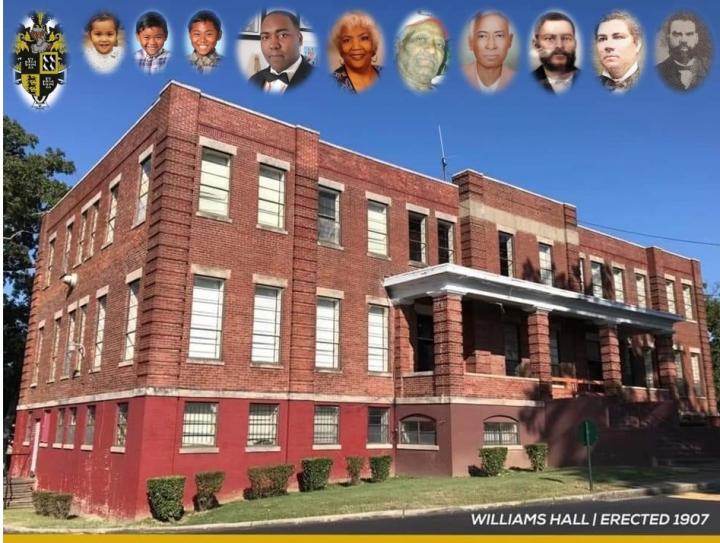
BELOW: 1909 Historically Black College and University Library Alliance:
Miles Has Served as a Haven For Women's Educational Opportunities Since Its Inception. In the Academic Year of 1909-1910, the College Educated 139 Female Students (Out of a Total of 158 Students). Women Were Housed In the Women's Dormitory In Williams Hall, Which Doubled as a Home Economic Class Building.
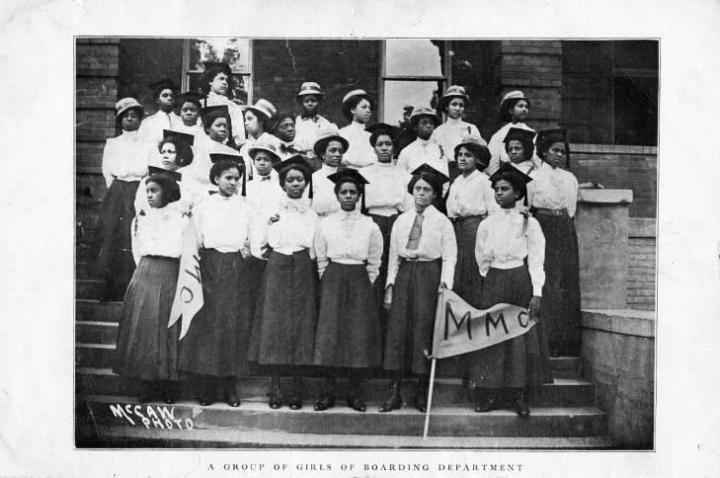
2020 Update about "Williams Hall" at Miles College:
FAIRFIELD, Ala. – Miles College was awarded a grant of almost $500,000 from the National Park Service, Department of Interior to preserve and restore Williams Hall as part of the Historically Black Colleges and Universities grant program, funded by the Historic Preservation Fund. Miles was one of 18 schools – and the only school in Alabama – to receive a portion of the $7.7 million in grants awarded during this round of funding. The monies are designated for the preservation of historic structures on campuses of HBCUs.
“We are honored to be one of the recipients of this grant from the National Park Service. This grant provides a significant contribution to the restoration of historic Williams Hall, breathing life back into a building that has played an indelible role in the history of our institution and has a significant position in our future,” said Miles College president Bobbie Knight.
Congress appropriates funding for the program through the Historic Preservation Fund, which uses revenue from federal oil leases on the Outer Continental Shelf, providing assistance for a broad range of preservation projects without expending tax dollars. U.S. Rep. Terri Sewell (AL-07) was instrumental in helping Miles College secure funding for Williams Hall through the Historic Preservation Fund.
"I am thrilled that Miles College will be receiving nearly $500,000 for historic preservation from the National Park Service,” Rep. Sewell said. “I have fought to create this funding specifically for historic preservation on HBCU campuses since coming to congress. HBCU campuses have played a pivotal role in American history, especially in our nation’s struggle for civil rights, and those sites must be preserved.
“We must continue to invest in HBCUs like Miles College. We need them now more than ever. Protecting our HBCUs continues to be one of my top legislative priorities, and I will never stop working to ensure their vitality."
Williams Hall is the oldest building on the campus of Miles College, erected in 1907 and is listed on the National Register of Historic Places. Once the sight of several epic events during the Civil Rights Era, the building has been in disrepair for several years. The preservation, renovation and rehabilitation of Williams Hall will document, and preserve, the site of many stories related to the African American struggle to gain equal rights as citizens in the 20th Century.
The school intends to restore Williams Hall to its appearance at that time while extending the usable lifespan of the building by providing modern and purposefully designed spaces for academic, teaching and museum offerings. Once Williams Hall has been restored, the College plans to use the building as a teaching museum to honor the founders, students, alumni, and the College’s role in the Modern-Day Civil Rights Movement.
President Knight was effusive in the appreciation she has for the assistance Rep. Sewell provided on the federal level as well as those who worked hard at the College to secure the funding.
“We are extremely appreciative of Rep. Terri Sewell for her assistance in advocating for Miles College in Washington, D.C. and are indebted for her tireless service to our district,” Knight said. “Our grant writing team at Miles was diligent in pursuing this opportunity, as well, and should certainly be commended.”
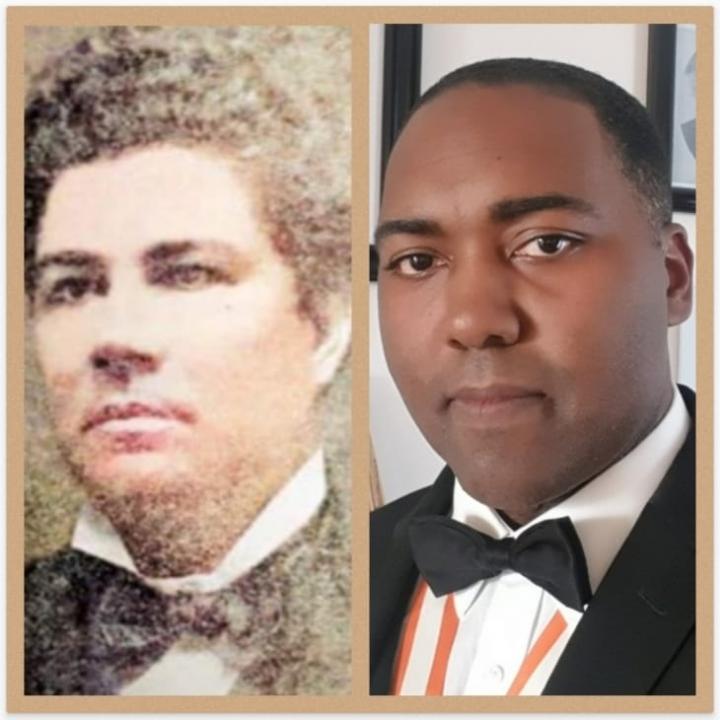
Bishop R. S. Williams,CME, approximately 1900, Ordained 1894. Bishop T. T. Williams, ULC, 2020, Ordained 2014.